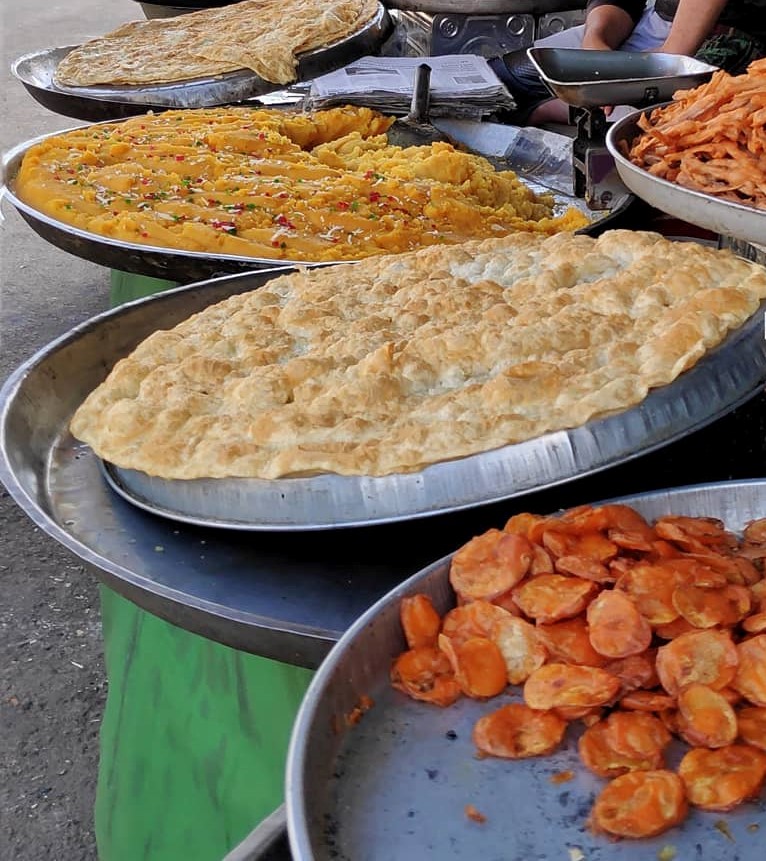Kashmir’s street foods are a symphony of flavors waiting to be explored. The unique blend of spices, textures, and tastes that make these culinary delights an unforgettable experience.
By Mir Tanveer
Kashmir, often referred to as the “Venice of the East” due to its breathtaking landscapes and incredible locales, is a region widely recognized for its natural beauty. However, beyond the scenic vistas lies a hidden treasure – the exquisite and diverse Kashmiri cuisine, a culinary tapestry that captivates people from around the globe. While thousands of tourists explore the various enchanting destinations in Kashmir, they also embark on a gastronomic journey, savoring the rich traditional dishes like wazan and its diverse recipes at functions, hotels, and even the tantalizing street food offerings that cater to food enthusiasts.
Exploring into the world of street foods, the epicenter of gastronomic delight is undoubtedly Dargah Hazratbal, situated on the tranquil banks of Dal Lake. Here, amidst the serene surroundings, one can indulge in the myriad flavors that define Kashmir’s street food culture. Every aficionado of Kashmiri street food, whether local or from afar, is drawn to this place to immerse themselves in the aromatic essence of the region’s culinary offerings.
Among the plethora of street foods, the top five must-try delicacies in Kashmir include Nidir Monji (Fried Lotus stem dipped in flour), Masala Tchot (Chana and traditional radish chutney wrapped in lavasa bread), Halva Paratha (halva made from sooji and paratha from flour), Kanak Masal (wheat boiled to tenderness and mixed with spices), and Tuji, a barbeque-style dish that, while not traditional, has become a common favorite.
Nadir Monji holds the pinnacle of popularity in the valley’s street food scene. For the ultimate experience, connoisseurs swear by the Nidir Monji found on the way to Pahalgam at Khanabal Anantnag, approximately 50 kilometers from the capital city. Bashir Ahmed, an avid Nadir Monji enthusiast, shared, “I always prefer buying Nadir Manji from Dargah for myself and my children, relishing the flavorful taste with Noon chai in the evening at home.”
Street foods like Masal Tchot and Kanak Masaal are ubiquitous, available at every nook and corner of the city. These delectable treats are served by hawkers strategically positioned in various locations, including hospitals, colleges, and universities, catering to a diverse clientele. Mohd Ramzan, a street hawker in Srinagar, emphasized, “This is my sole source of bread earning for my family, and people from different areas come to me for the satisfying taste of Masala Tchots.”

Halvaparath, another culinary gem, is reserved for places with large gatherings such as shrines in the valley. These unique foods promise to tantalize taste buds, providing a deviation from the ordinary. Many people revel in the experience of having Halvaparath with Noon Chai during the serene evening hours in Kashmir.
Tuji, though not rooted in tradition, has become immensely popular, especially among the younger generation. Available in four varieties – meat, beef, chicken, and fish – these mouthwatering delicacies can be enjoyed at Khayam Chowk in the old city and Makai Park on the banks of Dal. Khayam Chowk, in particular, witnesses a bustling crowd late into the night, with people relishing multiple varieties of Tuji.
Gaadh Nadhir, a dish featuring fresh water fish cooked with lotus stem and served with rice, is a culinary masterpiece utilizing a blend of almost 22 spices. Known locally as “Gaadh Nadhir,” it exemplifies the rich and diverse flavors intrinsic to Kashmiri cuisine.
In addition to traditional fare, Momo, a Tibetan variety, has gained popularity in Kashmir. Easily accessible in local markets, this emerging street food is embraced by locals and visitors alike. A street vendor in Lal Chowk, Srinagar, recounted his initial struggles in attracting customers but expressed satisfaction with the growing popularity of Momo among locals.
Having savored these delicious and appetizing dishes, one cannot help but contemplate the potential fading of Kashmir’s street food tradition. As with other fading traditions and customs, the influx of foreign influences and the rise of junk foods may alter the authentic taste of Kashmir. The streets, bustling with the presence of street foods, not only serve as a culinary delight but also act as a social glue, fostering interaction within Kashmir’s societal fabric. Those involved in the preparation of these foods find a daily source of livelihood, contributing to the vibrant street food culture in the valley.
In the words of Anderson, “Streets are the Institutions for Sociability, the source of entertainment and also an extension of living spaces,” a sentiment that resonates profoundly with the bustling streets of Kashmir. Indeed, in Kashmir, the love for these delectable street foods is universal, and no exploration of the valley is complete without indulging in these culinary delights.


Comments are closed.